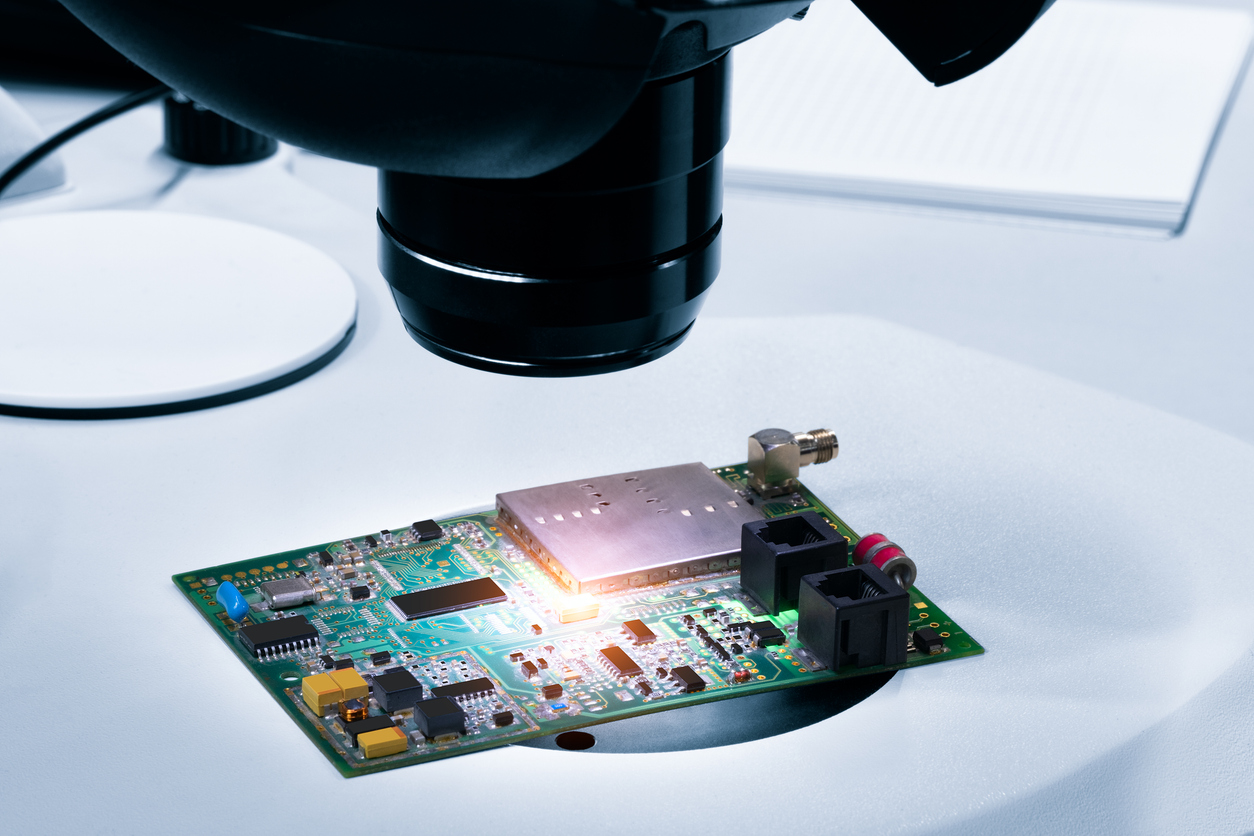When you send a product design to an electronics manufacturer, you’re putting trust in their process to deliver consistent quality. IPC standards help ensure you receive consistent, high-quality results throughout the electronics manufacturing process. These globally recognized guidelines define the best practices for electronics design, fabrication, and assembly, helping engineers, procurement teams, and manufacturers align on workmanship, testing, and reliability expectations.
While IPC-A-610 is the best-known benchmark, it is only one of many standards that guide the electronics manufacturing process. Understanding what these standards cover and what can happen if they are not followed helps procurement and engineering teams make better supplier decisions.
What Are IPC Standards and Why Do They Matter in the Electronics Manufacturing Process?
In 1957, six printed circuit board manufacturers came together to form the Institute for Printed Circuits. IPC-A-600, Acceptability of Printed Boards, became its first standard. The group opened its membership to other OEMs, government agencies, and global companies, and in 1999, it changed its name to IPC. The group continued to grow and expand, and in 2025 changed its name to Global Electronics Association.
Global Electronics Association develops global standards that define how electronic products should be designed, built, and inspected. Without these guidelines, each manufacturer could decide on its own acceptable quality level, leaving customers exposed to wide variations in reliability.
For example, one supplier might consider a partially lifted solder joint acceptable if the component still functions in testing. Another, following IPC standards, would reject it as a future failure risk. That difference may not be apparent during production but could emerge six months later when the product fails in the field, leading to costly warranty claims and brand damage.
By requiring IPC standards, customers gain assurance that the manufacturer adheres to industry-accepted definitions of quality, rather than relying on subjective internal rules.
The Benchmark for Workmanship
IPC-A-610 Acceptability for Electronic Assemblies is the standard most frequently used by manufacturers as a benchmark for workmanship. Input for its development came from participants in 31 countries. It defines acceptability criteria for solder joints, component alignment, cleanliness, and other aspects of PCB assembly.
The standard classifies acceptability criteria into three categories:
- Class 1 is the lowest class and most lenient regarding defects. It is intended for a product where the focus is on functionality and not reliability. Toys are an example of a product that might be tested against class 1.
- Class 2 is for dedicated-service electronic products where reliability is important but not critical, such as industrial controls or consumer electronics.
- Class 3 is for high-reliability applications where failure could endanger lives or compromise missions, such as those in aerospace, defense, and medical devices.
For example, A Class 2 build might allow for slightly more solder residue if it doesn’t affect function, keeping costs lower. For a Class 3 device, such as a pacemaker controller, those same residues would be unacceptable because they could cause corrosion over time.
Why One Standard Isn’t Enough For the Electronics Manufacturing Process
IPC-A-610 alone doesn’t cover the full scope of the electronics manufacturing process. A reliable supplier should also demonstrate compliance with related standards:
- J-STD-001 – requirements for soldered electrical and electronic assemblies. While IPC-A-610 focuses on what a finished joint should look like, J-STD-001 governs how the soldering process is performed. For example, it sets requirements for solder temperature, flux use, and operator training.
- IPC-7711/7721 – guidelines for rework and repair. Without these, technicians may improvise repairs in ways that introduce long-term reliability risks.
- IPC-S-815 – cleanliness requirements. Leftover flux or contaminants may seem minor but can create leakage currents and corrosion that lead to intermittent failures.
- ISO 9001:2015 – the broader quality management framework that ensures documentation, audits, corrective actions, and traceability are in place.
How Standards Shape Each Stage of Manufacturing
IPC and ISO standards guide not just inspection, but every step of the electronics manufacturing process:
- Design transfer – ensuring the bill of materials, drawings, and assembly instructions match IPC criteria so production doesn’t rely on guesswork.
- Assembly – following IPC-A-610 and J-STD-001 workmanship and soldering standards for consistent builds.
- Inspection and testing – verifying products meet visual and functional criteria, reducing costly field failures.
- Rework and repair – applying IPC-7711/7721 methods instead of makeshift fixes, which protects long-term reliability.
- Traceability and documentation – maintaining records under ISO 9001 ensures that if a defect is found, it can be traced back to the source batch or supplier.
Why This Matters to Your Business
For engineering and procurement teams, IPC standards translate directly into business outcomes:
- Lower risk of field failures – preventing recalls, warranty claims, and brand damage.
- More accurate cost projections – by reducing rework and scrap caused by poor workmanship.
- Improved supplier communication – since IPC provides a shared language for quality requirements.
- Regulatory compliance – particularly for aerospace, defense, automotive, and medical industries.
IPC standards do more than define how a solder joint should look. They guide the entire electronics manufacturing process, from design handoff through rework and repair. By holding manufacturers accountable to a recognized set of rules, they reduce risk and improve confidence in the products delivered.
For engineers and procurement professionals, those details can make the difference between a smooth production run and costly surprises down the road.
Choose Siemens Manufacturing for Unmatched Quality
Partnering with Siemens Manufacturing ensures your products meet the highest industry standards. Our commitment to compliance with IPC and other global quality standards means fewer headaches, greater reliability, and a competitive edge for your business. Reach out today and let us help you build confidence into every product, from prototype to production.
